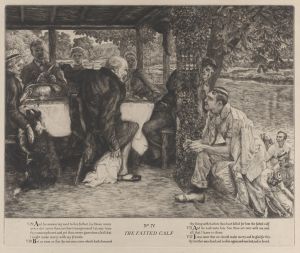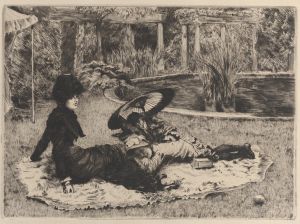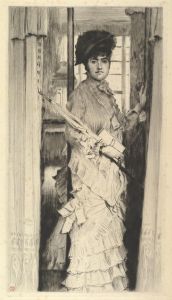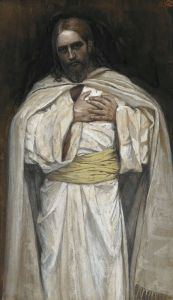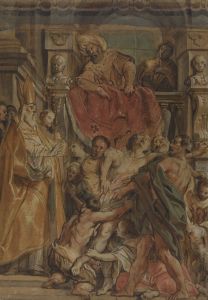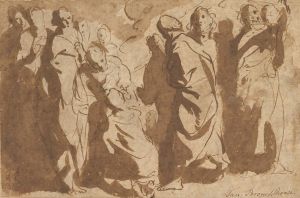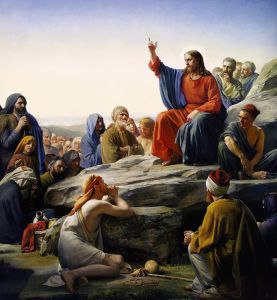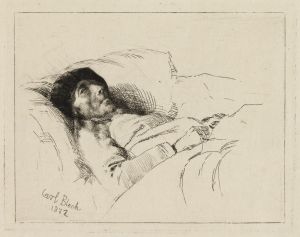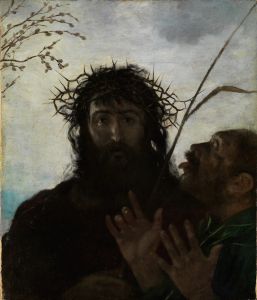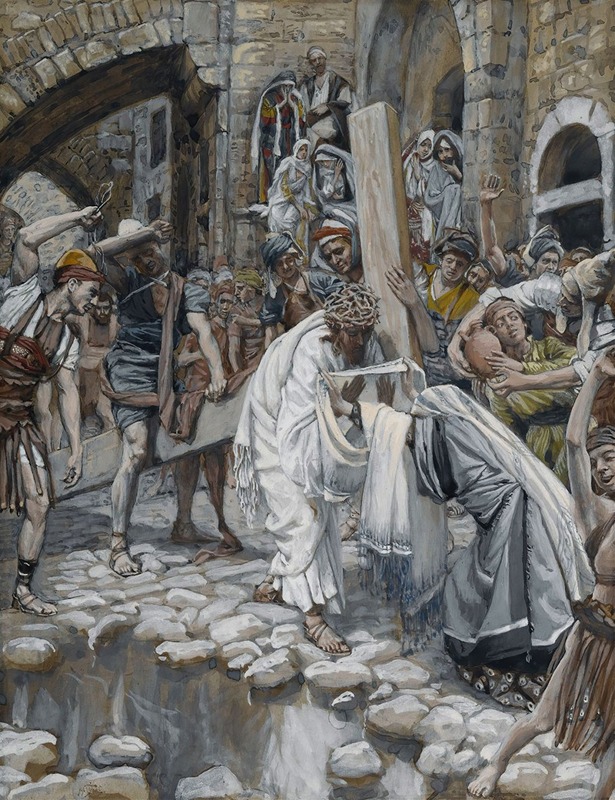
A Holy Woman Wipes the Face of Jesus
A hand-painted replica of James Tissot’s masterpiece A Holy Woman Wipes the Face of Jesus, meticulously crafted by professional artists to capture the true essence of the original. Each piece is created with museum-quality canvas and rare mineral pigments, carefully painted by experienced artists with delicate brushstrokes and rich, layered colors to perfectly recreate the texture of the original artwork. Unlike machine-printed reproductions, this hand-painted version brings the painting to life, infused with the artist’s emotions and skill in every stroke. Whether for personal collection or home decoration, it instantly elevates the artistic atmosphere of any space.
"A Holy Woman Wipes the Face of Jesus" is a painting by the French artist James Tissot. Tissot, born Jacques Joseph Tissot on October 15, 1836, in Nantes, France, is renowned for his detailed and evocative works, particularly those depicting biblical scenes. This painting is part of his extensive series illustrating the life of Jesus Christ, which he worked on after experiencing a profound religious conversion in the late 1880s.
James Tissot initially gained fame for his society paintings, capturing the fashions and social life of Paris and London. However, following his conversion, he dedicated himself to religious art, traveling to the Middle East to gain a deeper understanding of the historical and cultural context of the Bible. This commitment to authenticity is evident in his works, which are noted for their meticulous attention to detail and historical accuracy.
"A Holy Woman Wipes the Face of Jesus" depicts a moment from the Passion of Christ, specifically the sixth Station of the Cross in the traditional Christian devotion known as the Stations of the Cross. This station commemorates the act of compassion by a woman, often identified as Saint Veronica, who steps forward to wipe the sweat and blood from Jesus' face as he carries the cross to his crucifixion.
In Tissot's painting, the scene is rendered with a deep sense of empathy and realism. The artist's use of color, light, and composition draws the viewer into the emotional gravity of the moment. Jesus is shown in a state of suffering, his face marked by pain and exhaustion, while the holy woman, depicted with a serene and compassionate expression, gently wipes his face with a cloth. The background and surrounding figures are painted with careful attention to the historical setting, reflecting Tissot's dedication to portraying the scene as it might have appeared in first-century Jerusalem.
Tissot's series on the life of Christ, including "A Holy Woman Wipes the Face of Jesus," was published as "La Vie de Notre Seigneur Jésus-Christ" (The Life of Our Lord Jesus Christ) in 1896. These works were highly influential and widely acclaimed for their devotional and artistic qualities. The series was later acquired by the Brooklyn Museum in New York, where it remains an important part of the museum's collection.
James Tissot's religious paintings, including "A Holy Woman Wipes the Face of Jesus," continue to be celebrated for their emotional depth, historical accuracy, and artistic skill. They offer a unique and deeply personal interpretation of biblical events, reflecting the artist's own spiritual journey and his commitment to bringing these sacred stories to life through his art.





